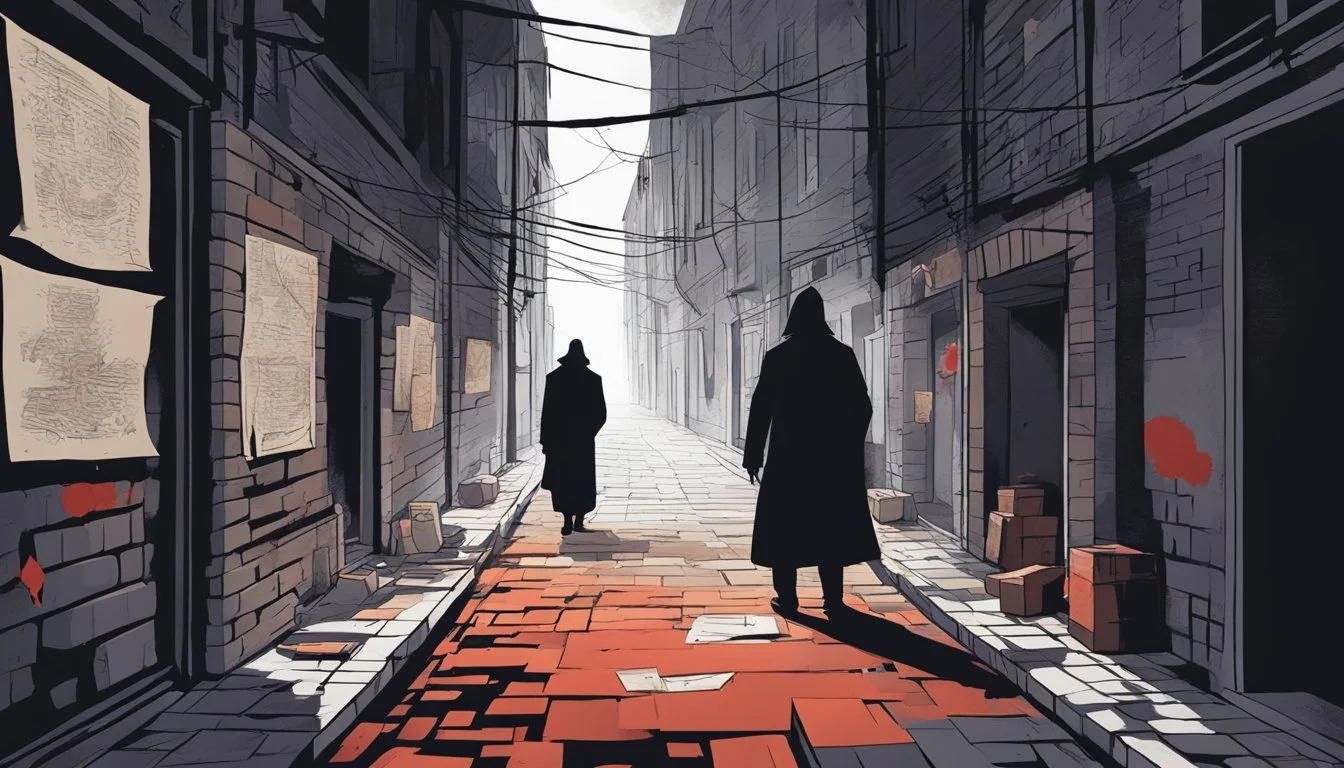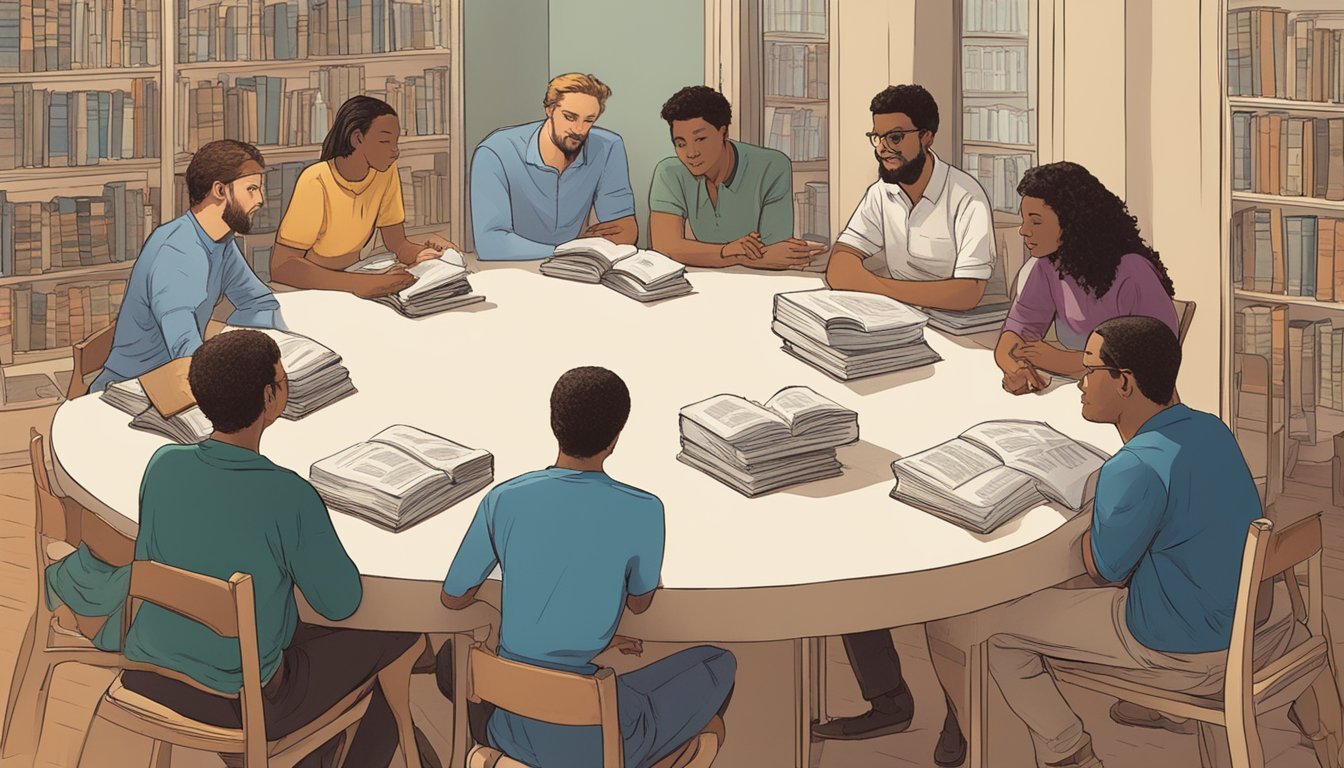Zodiac by Robert Graysmith: Unraveling the Infamous Serial Killer Case
Robert Graysmith's "Zodiac" is a gripping true crime account of one of America's most notorious unsolved serial killer cases. As a cartoonist for the San Francisco Chronicle in 1969, Graysmith had a front-row seat when the Zodiac Killer first struck, igniting his obsession with unmasking the hooded murderer.
The book reveals hundreds of previously undisclosed facts about the Zodiac's eleven-month reign of terror in the San Francisco Bay Area. Graysmith's meticulous research and insider perspective provide readers with a comprehensive look at the investigation, the cryptic messages, and the psychological profile of the elusive killer.
Since its initial release in 1986, "Zodiac" has sold over 4 million copies worldwide, cementing its status as a true crime classic. The book's enduring popularity led to a 2007 film adaptation directed by David Fincher, further solidifying its place in popular culture and true crime literature.
The Zodiac Murders Overview
The Zodiac murders were a series of unsolved killings that terrorized Northern California in the late 1960s and early 1970s. The perpetrator, known as the Zodiac Killer, targeted young couples in isolated areas.
Five confirmed victims were attacked, with two surviving. The killer taunted law enforcement and the public through letters sent to newspapers. These communications often included cryptograms and threats of more violence.
The Zodiac Killer claimed responsibility for 37 murders, though investigators only confirmed seven victims. The case garnered widespread media attention and public fascination due to the killer's mysterious identity and cryptic messages.
Key facts about the Zodiac murders:
Timeframe: December 1968 to October 1969 (confirmed attacks)
Location: San Francisco Bay Area and surrounding regions
Victims: Both male and female, typically young adults
Weapons used: Firearms and knives
Signature: Letters to newspapers containing ciphers and details of the crimes
Despite extensive investigations, the Zodiac Killer's true identity remains unknown. The case inspired numerous books, films, and documentaries, including Robert Graysmith's "Zodiac," which provided a detailed account of the murders and subsequent investigation.
Robert Graysmith: Author Background
Robert Graysmith was born Robert Gray Smith on September 17, 1942. He began his career as a cartoonist for the San Francisco Chronicle in the late 1960s.
Graysmith's interest in the Zodiac killer case developed while working at the newspaper. He became deeply involved in investigating the unsolved murders that occurred in the San Francisco Bay Area.
His obsession with the case led him to spend years researching and collecting information. This culminated in the publication of his first book, "Zodiac," in 1986.
The book became a bestseller, selling over 4 million copies worldwide. It brought renewed attention to the unsolved Zodiac murders and established Graysmith as a true crime author.
Graysmith went on to write additional books on the Zodiac case and other true crime topics. His work on the Zodiac killer has been influential, though some of his claims have faced scrutiny in recent years.
The 2007 film "Zodiac," directed by David Fincher, was based on Graysmith's books. Jake Gyllenhaal portrayed Graysmith in the movie, further increasing public awareness of his work.
Investigative Journalism Techniques
Robert Graysmith's work on the Zodiac case exemplifies key investigative journalism methods. His approach combined meticulous research, interviews, and analysis to uncover new leads and piece together the puzzle.
Primary Sources
Graysmith relied heavily on police reports, crime scene photos, and official documents to build his understanding of the Zodiac case. He pored over original letters and ciphers sent by the killer, analyzing handwriting and linguistic patterns. The author also examined physical evidence like fingerprints and ballistics reports.
Newspaper archives provided crucial context and timelines. Graysmith scoured microfilm records of articles about the murders, looking for overlooked details. He obtained copies of autopsy reports and coroner's findings to verify facts about the victims and crime scenes.
Witness Interviews
Face-to-face interviews with witnesses and investigators formed a key part of Graysmith's research. He spoke with detectives who worked the case, including Dave Toschi and Bill Armstrong. The author also tracked down and interviewed surviving victims like Bryan Hartnell and Michael Mageau.
Graysmith sought out family members of victims to gain personal insights. He spoke with peripheral figures like Paul Avery, a fellow journalist who received threats from the Zodiac. These firsthand accounts added depth and human elements to the investigation.
Codebreaking Efforts
The Zodiac's encrypted messages presented a unique challenge. Graysmith worked to decipher the killer's codes, consulting cryptography experts and using emerging computer technology. He studied the "340 cipher," which remained unsolved for decades.
The author explored potential sources for the Zodiac's cryptographic knowledge, including military manuals and puzzle books. Graysmith's persistence in tackling the ciphers mirrored the efforts of law enforcement and amateur sleuths. His work helped keep public interest alive and contributed to eventual breakthroughs in cracking the codes.
The Zodiac Killer Profile
The Zodiac Killer's profile combines psychological analysis, potential suspects, and a distinct modus operandi. These elements provide insight into one of America's most infamous unsolved serial killer cases.
Psychological Analysis
The Zodiac Killer exhibited traits of a narcissistic personality disorder. He craved attention and recognition, as evidenced by his letters to the press and police. The killer demonstrated high intelligence and meticulous planning in his crimes.
His cryptograms and ciphers revealed a fascination with codes and puzzles. This suggests a desire to prove intellectual superiority over law enforcement and the public.
The Zodiac's taunting messages and threats indicated sadistic tendencies. He derived pleasure from instilling fear in the community and manipulating the media.
Suspects
Arthur Leigh Allen emerged as a prime suspect in the Zodiac case. He owned a Zodiac-brand watch and possessed other items linked to the killer's description.
Rick Marshall, a projectionist with an interest in film and codes, was also considered a person of interest. His physical appearance matched witness descriptions.
Lawrence Kane, a Nevada resident, became a suspect due to his criminal history and presence near crime scenes. However, concrete evidence connecting any suspect to the crimes remained elusive.
Modus Operandi
The Zodiac Killer targeted young couples in isolated areas. He used both firearms and knives in his attacks, demonstrating versatility in his methods.
The killer wore a distinctive costume during some attacks: a black executioner-style hood with a white crossed-circle symbol. This outfit became his trademark.
After each crime, the Zodiac sent letters to local newspapers. These often contained coded messages or pieces of evidence to prove his identity. He demanded publication of his letters, using threats of violence to ensure compliance.
The Ciphers
The Zodiac Killer's ciphers were a crucial element of his communication strategy, baffling law enforcement and the public alike. These cryptograms varied in complexity and content, with some remaining unsolved for decades.
Cryptanalysis
The Zodiac's first cipher, sent in three parts to local newspapers in 1969, was cracked within a week by a schoolteacher and his wife. It contained a chilling message about the killer's motives. The second cipher, known as the "340 cipher," proved more challenging. It remained unsolved until December 2020, when a team of cryptography enthusiasts finally deciphered it.
The FBI's Cryptanalysis and Racketeering Records Unit (CRRU) played a significant role in attempting to decode these messages. They employed various techniques, including frequency analysis and pattern recognition, to unravel the Zodiac's cryptic communications.
Cipher Variants
The Zodiac used different cipher types in his communications. His first cipher was a simple substitution code, where each symbol represented a specific letter. The 340 cipher employed a more complex method, combining homophonic substitution with transposition.
Other ciphers sent by the Zodiac included the "408 cipher," the "13 Symbol cipher," and the "32 Symbol cipher." Some of these remain unsolved, adding to the ongoing mystery surrounding the case.
Communications with Media
The Zodiac Killer frequently sent his ciphers to local newspapers, including the San Francisco Chronicle, Vallejo Times-Herald, and San Francisco Examiner. These communications often included threats, taunts, and claims of additional murders.
The killer demanded that his ciphers be published on the front page, threatening more violence if his demands weren't met. This strategy ensured widespread public attention and created a sense of fear and fascination.
Media outlets grappled with the ethical dilemma of publishing these messages, weighing public safety concerns against the potential of encouraging the killer's behavior.
Police Investigation
The Zodiac case challenged law enforcement across multiple jurisdictions. Detectives faced a cunning killer who taunted them through letters and ciphers. Collaboration between agencies proved crucial yet difficult as the investigation spanned years.
Case Development
The Zodiac investigation began in December 1968 after the murders of David Faraday and Betty Lou Jensen in Benicia. Initially treated as a local case, it expanded as more attacks occurred.
Detectives collected physical evidence from crime scenes, including shell casings and a partial palm print. They interviewed witnesses and survivors, creating composite sketches.
The case took on new urgency when the killer began sending taunting letters to newspapers. Code-breakers worked to decipher the cryptograms. Police set up special hotlines and task forces to handle the influx of tips and leads.
Interdepartmental Cooperation
The Zodiac's crimes spanned multiple counties, requiring cooperation between agencies. The Vallejo Police Department, Napa County Sheriff's Office, and San Francisco Police Department were key players.
Detectives shared information through meetings and memos. However, turf battles and communication gaps sometimes hindered progress.
The FBI provided technical assistance with cryptography and handwriting analysis. They also helped coordinate information sharing between local agencies.
Some detectives, like Dave Toschi of SFPD, became deeply invested in the case. They continued investigating long after the official trail went cold.
Challenges and Obstacles
The investigation faced numerous hurdles. The killer's wide geographic range made it difficult to connect cases initially. Limited forensic technology of the era hampered evidence analysis.
The Zodiac's ever-changing M.O. and appearance descriptions confused efforts to identify him. His cryptic letters led investigators down many false paths.
Media attention both helped and hindered. While it kept public interest high, it also produced a flood of false leads and copycat threats.
Budget constraints and personnel changes over the years disrupted continuity. As time passed with no resolution, the case gradually lost priority to more current crimes.
Public Reaction and Media Coverage
The Zodiac Killer case captivated the public's attention, generating widespread fear and fascination. Local newspapers, including the San Francisco Chronicle, played a crucial role in disseminating information about the murders and the killer's cryptic messages.
Robert Graysmith's book "Zodiac" reignited interest in the case years after the initial crimes. Its publication in 1986 brought renewed media attention to the unsolved mysteries surrounding the Zodiac Killer.
The Chronicle's coverage of the case was particularly significant. As a cartoonist for the newspaper, Graysmith had a unique perspective on how the story unfolded in real-time. His insider knowledge added depth to his book's portrayal of the media frenzy.
Public reaction to the Zodiac Killer ranged from terror to morbid curiosity. The killer's taunting letters and ciphers sent to newspapers fueled speculation and amateur sleuthing efforts among readers.
Media coverage of the case extended beyond print. Television news reports and radio broadcasts kept the public informed about developments in the investigation. This constant media presence contributed to the enduring public interest in the Zodiac Killer saga.
Graysmith's book and subsequent film adaptation in 2007 further amplified public awareness of the case. The movie's recreation of 1960s-70s newsrooms highlighted the era's journalistic approach to covering such sensational crimes.
Impact on Pop Culture
Robert Graysmith's book "Zodiac" has left an indelible mark on popular culture. The meticulously researched account of the infamous Zodiac Killer case captivated readers and reignited public interest in the unsolved murders.
The book's popularity led to its adaptation into a major Hollywood film in 2007. Directed by David Fincher and starring Jake Gyllenhaal as Graysmith, the movie brought the Zodiac case to a new generation of audiences.
Graysmith's work has inspired numerous true crime documentaries, podcasts, and television series. His detailed investigation and theories have become a cornerstone for discussions about the Zodiac Killer in media and online forums.
The book's impact extends beyond entertainment, influencing how cold cases are portrayed in popular media. It set a standard for in-depth, obsessive investigations that blend journalistic rigor with personal narrative.
"Zodiac" has also contributed to the enduring fascination with unsolved mysteries in American culture. The case remains a subject of speculation and amateur sleuthing, with online communities dedicated to cracking the Zodiac's ciphers and identifying the killer.
Graysmith's portrayal of the investigation has become a touchstone for true crime enthusiasts. His work continues to shape public perception of the Zodiac case and its place in criminal history.
Graysmith's Theories and Conclusions
Robert Graysmith developed several key theories about the Zodiac Killer's identity and motives. He believed the killer was likely a man named Arthur Leigh Allen, based on circumstantial evidence and behavioral similarities.
Graysmith theorized that the Zodiac had a military background, given his use of military-style boot prints and weapons terminology. He also suggested the killer may have had law enforcement connections, explaining his ability to evade capture.
The author proposed that the Zodiac's crimes were motivated by a desire for attention and notoriety. Graysmith pointed to the killer's frequent letters to the press as evidence of this craving for public recognition.
One of Graysmith's more controversial theories was that the Zodiac had committed more murders than officially attributed to him. He speculated the killer may have been responsible for other unsolved cases in California.
Despite his extensive research, Graysmith acknowledged that many of his conclusions remained speculative. The Zodiac case continues to be unsolved, with debate ongoing about the validity of various theories, including those put forth by Graysmith.
Aftermath and Unsolved Mysteries
The Zodiac case remains one of America's most infamous unsolved serial killer investigations. Despite extensive efforts, the killer's identity remains unknown decades later, though forensic advancements offer new hope.
Continued Investigations
Law enforcement agencies have never ceased their pursuit of the Zodiac Killer. The case files remain open in multiple jurisdictions, including San Francisco, Vallejo, and Napa County. Detectives periodically review evidence and follow up on new leads.
In 2007, a fresh look at old evidence led to DNA testing of saliva from envelopes containing the Zodiac's letters. While a partial genetic profile was obtained, it did not match any suspects in criminal databases.
Amateur sleuths and online communities continue to analyze the case. They propose new theories and potential suspects regularly. However, none have led to a definitive breakthrough.
Modern Forensic Advancements
Technological progress has opened new avenues for investigation. Advanced DNA analysis techniques offer the potential to extract more genetic information from old evidence.
Genealogical DNA databases have helped solve other cold cases. Some experts believe these methods could potentially identify the Zodiac if his DNA is on file or if a relative has submitted their genetic information.
Computer analysis of the Zodiac's handwriting and ciphers continues. In 2020, an international team of codebreakers cracked one of the killer's previously unsolved ciphers, demonstrating the ongoing value of reexamining old evidence with new tools.
Book Reception and Criticism
Robert Graysmith's "Zodiac" received widespread attention upon its release in 1986. The book became a bestseller, selling over 4 million copies worldwide. Its popularity stemmed from Graysmith's firsthand experience as a cartoonist at the San Francisco Chronicle during the Zodiac Killer's active period.
Many readers praised Graysmith's detailed research and compelling narrative style. The book's extensive collection of evidence and correspondence related to the case was particularly well-received. It provided the public with unprecedented access to information about the unsolved murders.
Critics, however, raised concerns about some of Graysmith's claims and conclusions. Some questioned the accuracy of certain details and the author's interpretation of evidence. Debates arose regarding Graysmith's proposed suspects, especially his focus on Arthur Leigh Allen.
Law enforcement officials had mixed reactions to the book. Some appreciated the renewed public interest in the case, while others criticized potential inaccuracies or sensationalism.
Despite criticisms, "Zodiac" remains a significant work in true crime literature. It has inspired numerous adaptations, including David Fincher's 2007 film starring Jake Gyllenhaal as Graysmith. The book continues to spark discussions and theories about the infamous unsolved case.






